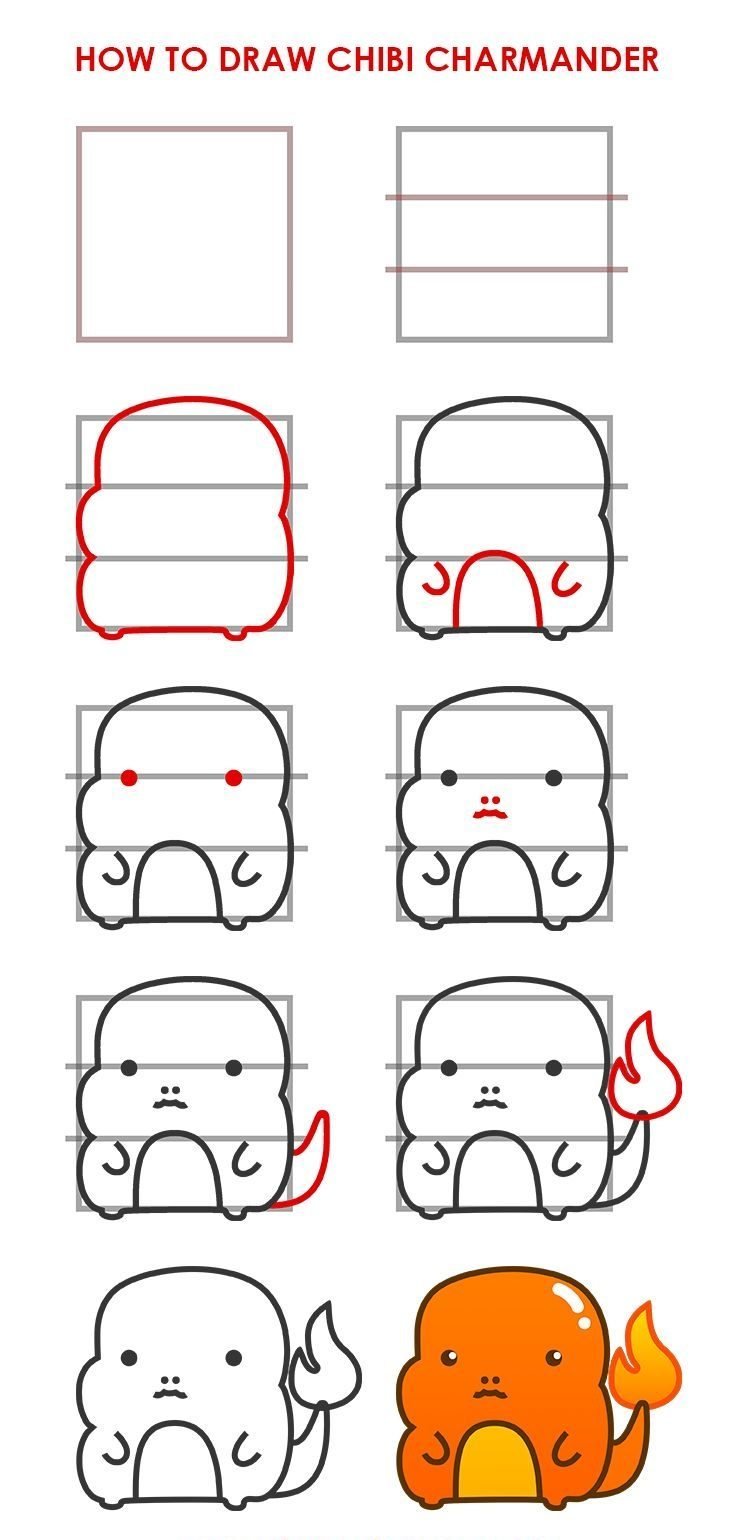

It could also help you make less mistakes (so less erasing) and allows you to focus on drawing one part of the subject at a time. Guidelines can be useful to help you get the proportions right on a drawing subject. You’ll start to train your hand and eyes to feel more natural at drawing these shapes. Still look weird? Keep drawing! You’ll be able to see why that shape came out odd and you can try to correct it in your next attempt. Use a ruler if you need to, but once your shapes look like the shape they are supposed to be…start drawing them freehand. Really get to know the parallel lines, the perpendicular lines and the angles that come with each one. Practice drawing your circles, your squares, triangles, etc. We’re starting out easy again! Don’t worry, this exercise do get harder very quickly.
#Easy drawing for beginners step by step how to#
Squares: The Design Sketchbook – How to Draw Perfect Squares or visit the online guide Need videos to help you draw some shapes? Here’s some great ones I found that don’t utilize extra tools (like rulers or protractors).įreehand Circles: Dave Hax – How to Draw a Perfect Circleįive-Pointed Stars: MyHowToDraw – How to Draw a Star Drawing a perfect freehand circle is almost nearly impossible but with practice, you can actually produce great results. Most people have trouble with the shapes that have all equal sides –circles, stars, squares, etc. Want to draw a tennis racket? Start off with a rough sketch of an oval and a long, thin rectangle! Want to draw a dog? Start off with an oval head and rectangles for his body and legs. You can use these shapes to help you draft the outline of an object to start. Bill Martin’s Guide to Drawing has some great information on shapes that I highly recommend. Yes, we’ll have to take it back to preschool just for a second here.

It’s also important for you to have a good grasp of your basic shapes. Follow the resources above to explore the different ways to grip a pencil and what results come out of it.

However, changing the grip on your pencil may allow you to produce a variety of effects and give you better control of your finished product.Ĭheck out The Virtual Instructor’s article or Proko’s video demonstration on how to hold and control your pencil. You can use a pencil however the heck you want to. Some artists grip their pencils differently than how we were taught to hold a pencil for writing in elementary school. This first week includes shapes and lines, guidelines and proportions, and an introduction to contouring. I’ve provided the best sources I found to help you learn the very basics of drawing. This article features a tutorial that offers a brand new perspective on the basics of drawing that I highly recommend. But you are going to have to dedicate more time practicing to be on the level of “beginner” that most of these resources assume. Although a lot of them claimed as if they were for “beginners,” they actually were for varying levels of beginner.Ĭan’t draw a straight line to save your life? No worries! You are not a lost cause by any means. I feel like I must have look at hundreds before putting this together. The amount of beginner’s guide out there for drawing almost seems endless.

Week 1: DRAWING Shapes, Lines, Forms, Proportions, Silhouettes, Contouring


 0 kommentar(er)
0 kommentar(er)
